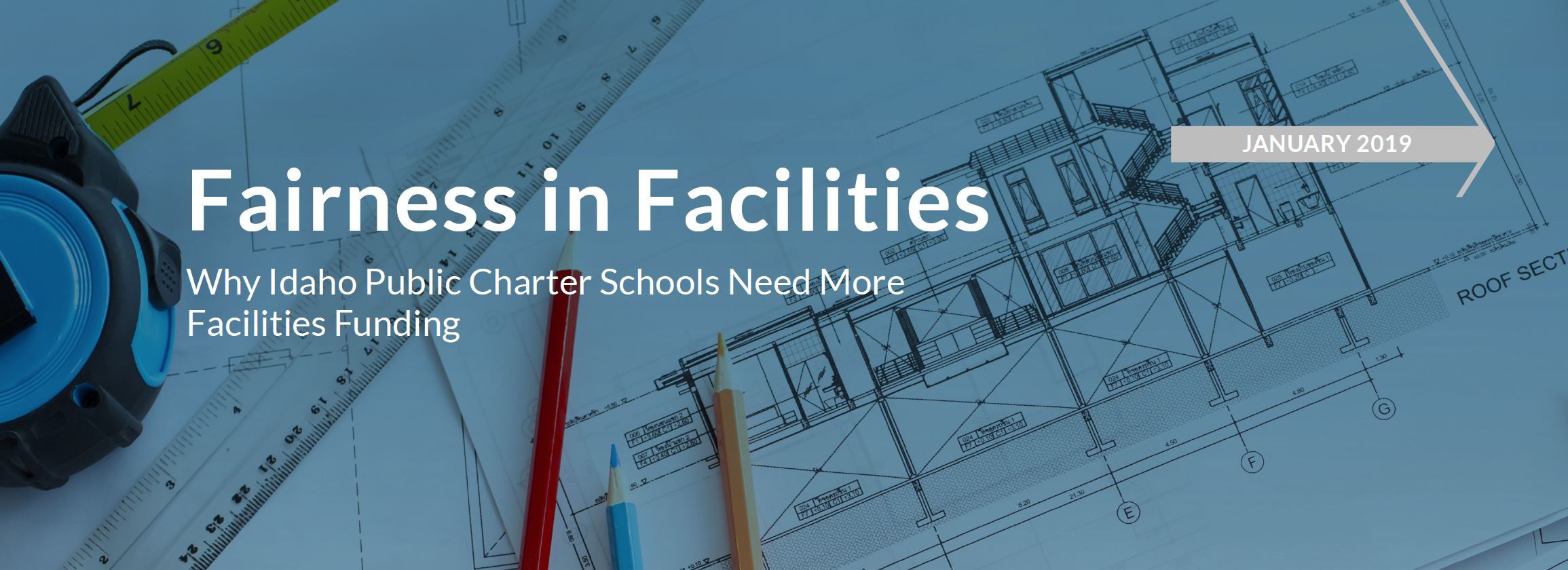
Fairness in Facilities: Why Idaho Public Charter Schools Need More Facilities Funding
To document the financial challenges facing Idaho public charter schools, and to help us find ways to improve how charters finance facilities in the Gem State, we engaged the research team at Bellwether Education Partners. In 2016, Bellwether issued Building Excellence: How Helping Charters Access Facilities Can Improve Opportunity for Idaho Kids. In that report, the crack research team at Bellwether surveyed 26 of the state’s brick and mortar charter school leaders (which represented about 65 percent of the charters in Idaho), and fully half of the respondents “agreed or strongly agreed that they had to make ‘substantial compromises to what we wanted’ when securing a facility for their school.”
Fast forward to 2018, and charter schools are still making compromises and struggling to finance facilities. But how, exactly, do public charter school construction projects compare to district construction projects? What decisions and trade-offs do charter leaders make? How can policymakers equalize access to facilities funding for all public schools?
In their new report, Fairness in Facilities: Why Idaho Public Charter Schools Need More Facilities Funding, Bellwether sheds light on these questions. They found that Idaho’s public charter schools receive just $445 per pupil in state funding compared to the more than $1,200 per pupil that district schools receive in state and local funding. As a result, public charter schools must use their operating dollars and borrow money to purchase and construct school buildings. But charters in Idaho face a special financial challenge when it comes to financing their facility costs. The research team documents that:
- In Boise, Future Public School’s per-seat cost was half that of the least expensive elementary school built by the Boise Public School District ($13,123 vs. $26,751).
- In West Ada, Compass Charter School’s per seat cost was 25 percent lower than the least expensive of West Ada’s new construction projects ($16,958 vs. $23,958).
- In Middleton, Forge International’s per-seat cost was half that of the Middleton School District’s proposed new school ($15,571 vs. $31,580). It’s per-square-foot costs were even lower ($196 vs. $316).
Making matters even harder for Idaho’s public charter schools, Bellwether documents how some local jurisdictions in Idaho charge impact fees on new charter school construction. Compass Public Charter School in Meridian, for example, had to pay hundreds of thousands of dollars in “impact fees” while the West Ada School District had their fees waived.
Doing more with less is noble in public education. This is something quality public charter schools do well. It is also something, we readily admit, that cash-strapped rural and high-need schools across Idaho know all too well themselves. Fact is, it is well documented that all of public education in Idaho operates on leaner rations than do schools in most parts of the United States.
All Idaho children deserve to be educated in safe and functional buildings. This is true for both public district schools and public charter schools, and now is a great time to start making some progress. We encourage you to join the conversation, as our children’s future, and the future of our great state depend on it.
The report recommends that policymakers consider five key ways to equalize charter schools’ access to facilities funds:
- Improving data collection and transparency around how public schools spend facilities funds
- Ensuring all public schools are treated equally in terms of state and local fee obligations
- Increasing state funding for all public school facilities, including increasing the per-pupil facilities allocation to charter schools
- Providing the state’s moral obligation to reduce the cost of borrowing for charter schools
- Enabling charter schools to access local funding streams
READ THE REPORT
ABOUT BELLWETHER
Bellwether Education Partners is a national, nonpartisan nonprofit of more than 50 professionals dedicated to helping education organizations become more effective in their work and achieve dramatic results, especially for the most underserved students.
–




